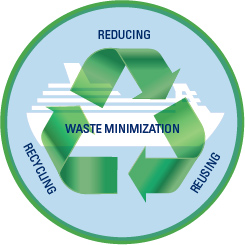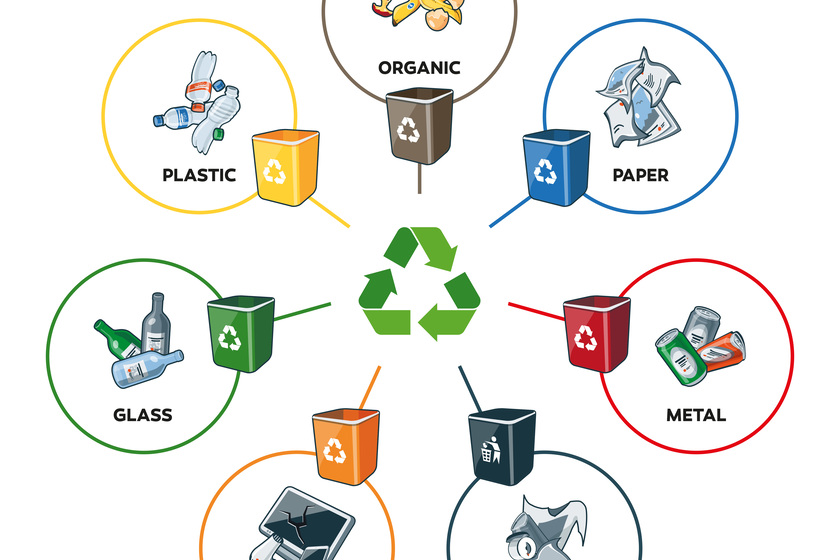The Effect of Recycling Lives Services on Communities and the Setting
The Effect of Recycling Lives Services on Communities and the Setting
Blog Article
Exploring Various Types of Waste in Modern Waste Management Systems
The modern landscape of waste monitoring involves navigating a complicated range of waste types, each requiring specialized handling and disposal methods to alleviate environmental influences. Metropolitan solid waste, hazardous waste, digital waste, and organic waste each existing unique obstacles and possibilities for resource healing. Ingenious services such as wise waste containers and waste-to-energy technologies are becoming essential tools in improving effectiveness and sustainability. Recognizing these waste kinds is necessary for fostering public understanding and motivating active participation in lasting practices. What approaches can effectively address these varied sorts of waste while advertising a circular economy?
Local Strong Waste
Metropolitan solid waste, commonly referred to as house trash or rubbish, incorporates a variety of disposed of materials generated by residential, business, and institutional resources within a district. This waste stream normally consists of things such as product packaging, food scraps, lawn trimmings, paper, plastics, fabrics, and disposed of family items. The management of community solid waste is an essential component of urban preparation and public health, requiring reliable collection, transport, and disposal systems.
Efficient waste monitoring systems are created to reduce environmental impact while maximizing resource recuperation. Composting natural waste, such as food scraps and backyard trimmings, not just minimizes landfill usage yet likewise produces beneficial soil changes.
Districts have to additionally deal with the logistical and economic obstacles connected with waste management. Implementing pay-as-you-throw systems, improving public awareness, and spending in modern technology can considerably boost waste diversion rates. By incorporating these practices, communities can cultivate sustainable areas, reduce greenhouse gas emissions, and preserve natural deposits.
Contaminated Materials

Effective hazardous waste management involves numerous critical steps: identification, treatment, partition, and disposal. Partition makes sure that dangerous materials are stored separately from non-hazardous waste to stop cross-contamination.
Governing frameworks, such as the Source Conservation and Recuperation Act (RCRA) in the USA, give standards and requirements for contaminated materials administration. Adherence to these policies, combined with innovations in waste therapy technologies, is essential in mitigating the risks connected with contaminated materials.
Digital Waste
Digital waste, commonly referred to as e-waste, represents a rapidly expanding obstacle in waste monitoring systems worldwide. This kind of waste encompasses discarded electronic gadgets and devices such as mobile phones, computer systems, televisions, and other digital devices. The rapid rate of technological advancement, combined with lowering item lifespans and customer demand for the newest devices, has actually tremendously increased the quantity of e-waste generated yearly.
E-waste is specifically bothersome due to use this link its complicated structure, typically containing unsafe substances like mercury, cadmium, and lead, which posture substantial environmental and wellness dangers otherwise correctly managed. On the other hand, e-waste additionally includes valuable materials such as gold, silver, and copper, which can be recuperated and reused. The dual nature of e-waste-- both important and harmful-- demands specialized handling, reusing, and disposal procedures.
Efficient e-waste administration entails rigid regulatory structures, robust collection systems, and advanced reusing innovations. Public recognition and participation are essential, as inappropriate disposal techniques, such as illegal unloading and casual recycling, worsen ecological contamination and health risks. As a result, enhancing e-waste management practices is essential for alleviating ecological impact and recuperating valuable resources in an increasingly digital world.

Organic Waste
Organic waste, consisting of kitchen scraps, backyard trimmings, and agricultural deposits, stands for a significant section of the international waste stream. This type of waste is biodegradable, suggesting it can be broken down by microorganisms into simpler natural compounds. Regardless of its potential for all-natural disintegration, improper monitoring of organic waste can bring about unfavorable environmental effects, including the exhaust of greenhouse gases such as methane, which contribute to environment adjustment.
Efficient administration of organic waste is important for decreasing these environmental impacts (recycling lives services). Composting is a commonly taken on method, changing natural waste right into nutrient-rich garden compost that can enhance soil wellness and agricultural performance. In addition, anaerobic food digestion is an arising innovation that transforms organic waste into biogas, a renewable resource resource, and digestate, which can be used as plant food
Municipalities and waste management entities have to carry out robust natural waste collection and treatment programs to make the most of the benefits of these processes. Public education projects can likewise play a pivotal duty in encouraging houses and services to separate organic waste from various other kinds of waste. By prioritizing the management of organic waste, societies can reduce landfill usage, lower greenhouse gas discharges, and create useful by-products for agricultural use.

Cutting-edge Waste Management
In the realm of waste administration, ingenious methodologies are changing how cultures handle their refuse, aiming for sustainability and efficiency. One prominent technology check here is the application of wise waste containers geared up with sensing units that monitor fill levels and optimize collection courses.
Another noteworthy advancement is the adoption of waste-to-energy (WtE) innovations. By transforming non-recyclable waste into usable energy with procedures such as incineration and anaerobic digestion, WtE lowers land fill burden and provides an eco-friendly power source. Innovations in chemical reusing allow for the breakdown of complicated plastics into their initial monomers, enabling the creation of new, high-grade plastic products.
Additionally, the circular economy design is acquiring grip, highlighting the style of items and systems that focus on reusability and resource efficiency. This holistic strategy encourages markets to reduce waste generation from the beginning. Via these ingenious strategies, contemporary waste monitoring systems are not just addressing the immediate challenges of waste disposal yet also leading the way for an extra sustainable future.
Final Thought
A comprehensive understanding of community solid waste, unsafe waste, digital waste, and natural waste, coupled with the implementation of cutting-edge waste administration services, is essential for mitigating ecological influences. Incorporating innovations such as wise waste bins and waste-to-energy systems can improve effectiveness and sustainability. Reliable waste monitoring approaches not only foster resource recuperation but likewise advertise public recognition and engagement, inevitably contributing to the development of a round economic situation.
The modern landscape of waste management includes navigating a complex selection of waste types, each calling for specialized handling and disposal methods to reduce environmental impacts. Metropolitan strong pop over to this web-site waste, dangerous waste, digital waste, and natural waste each existing unique obstacles and chances for source recovery.Digital waste, typically referred to as e-waste, represents a swiftly growing obstacle in waste monitoring systems globally. Via these ingenious strategies, modern-day waste monitoring systems are not only addressing the immediate obstacles of waste disposal but also leading the means for a much more lasting future.
A thorough understanding of local solid waste, unsafe waste, electronic waste, and organic waste, coupled with the implementation of innovative waste monitoring solutions, is necessary for mitigating ecological effects. (recycling lives services)
Report this page